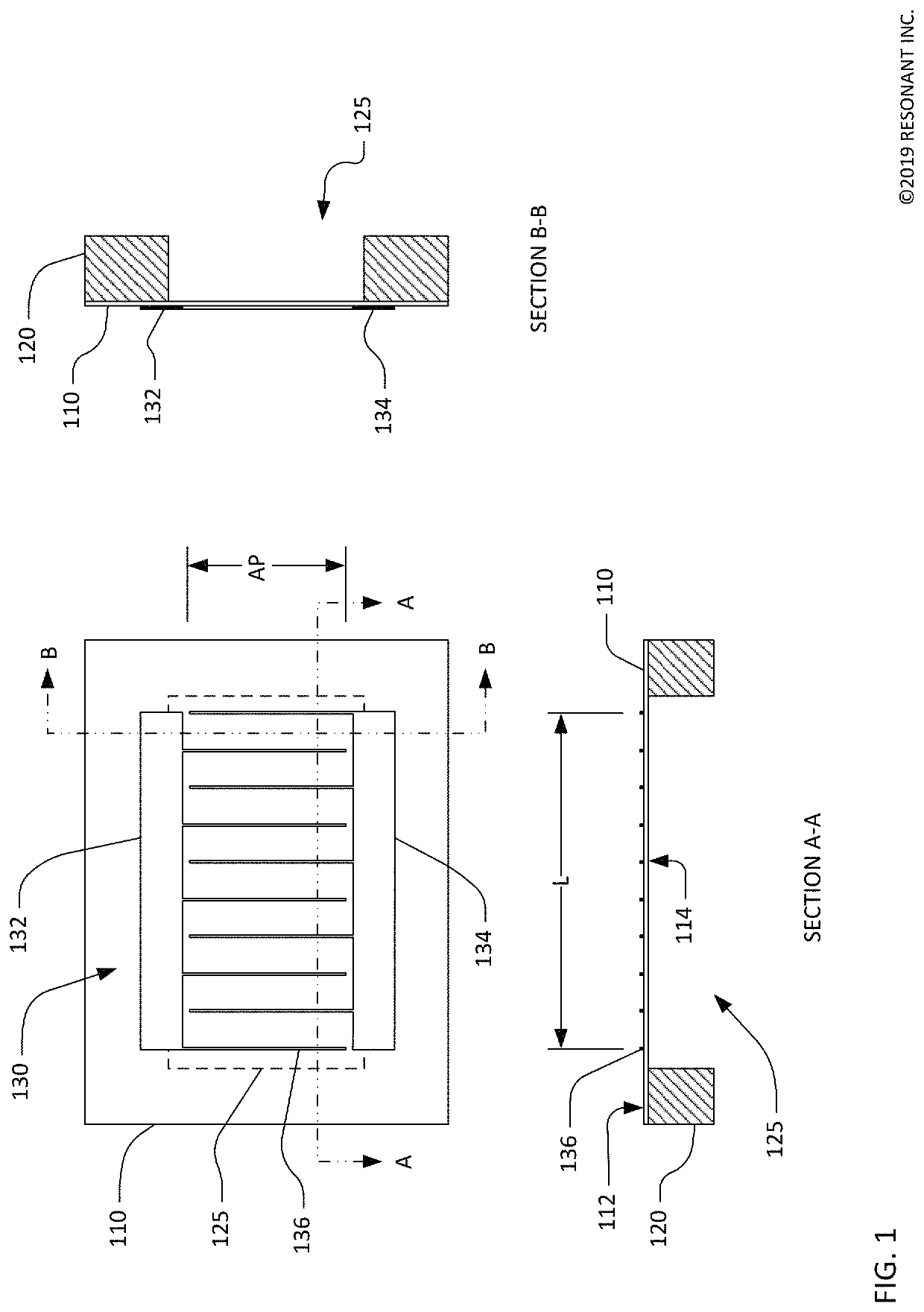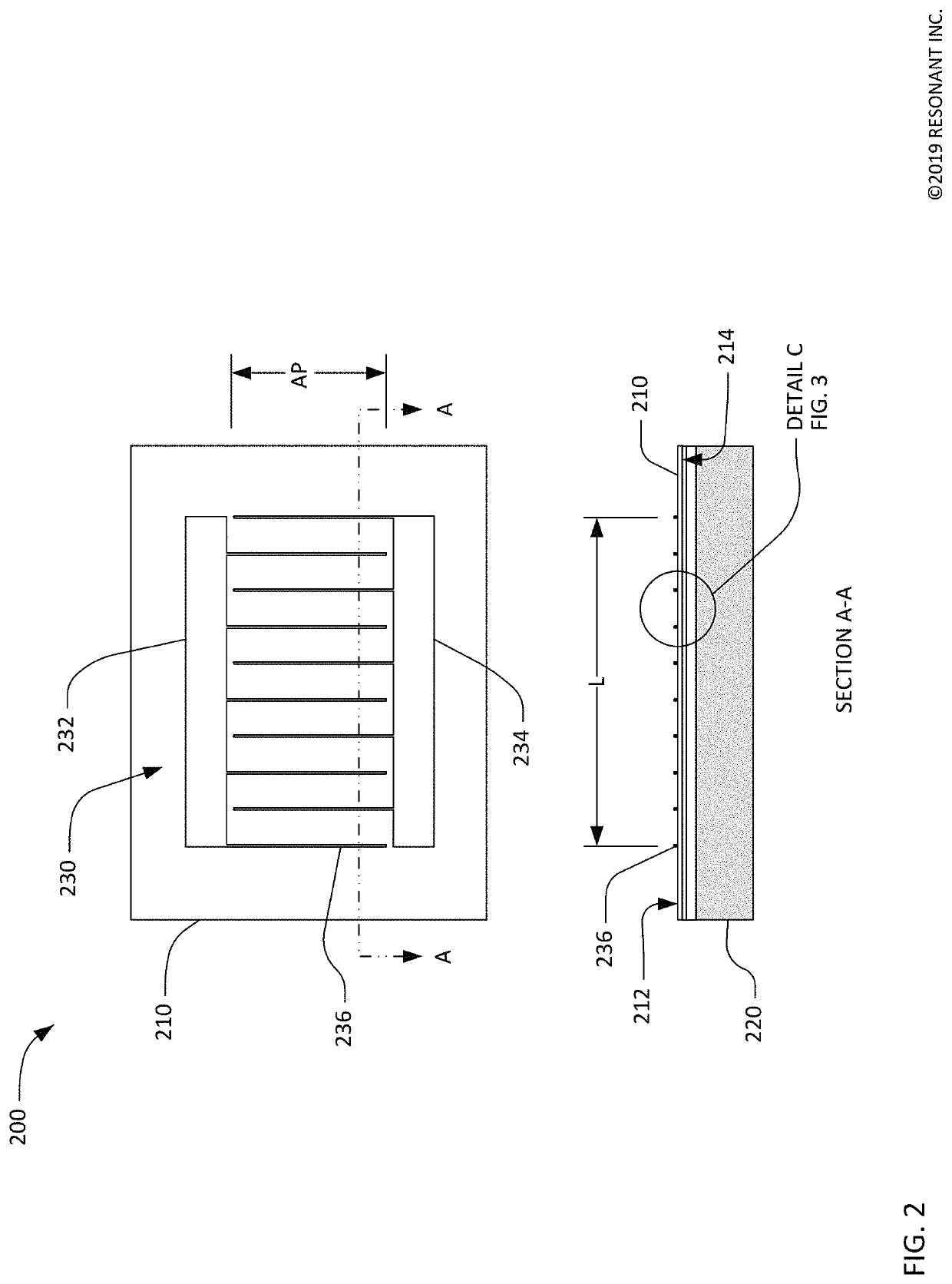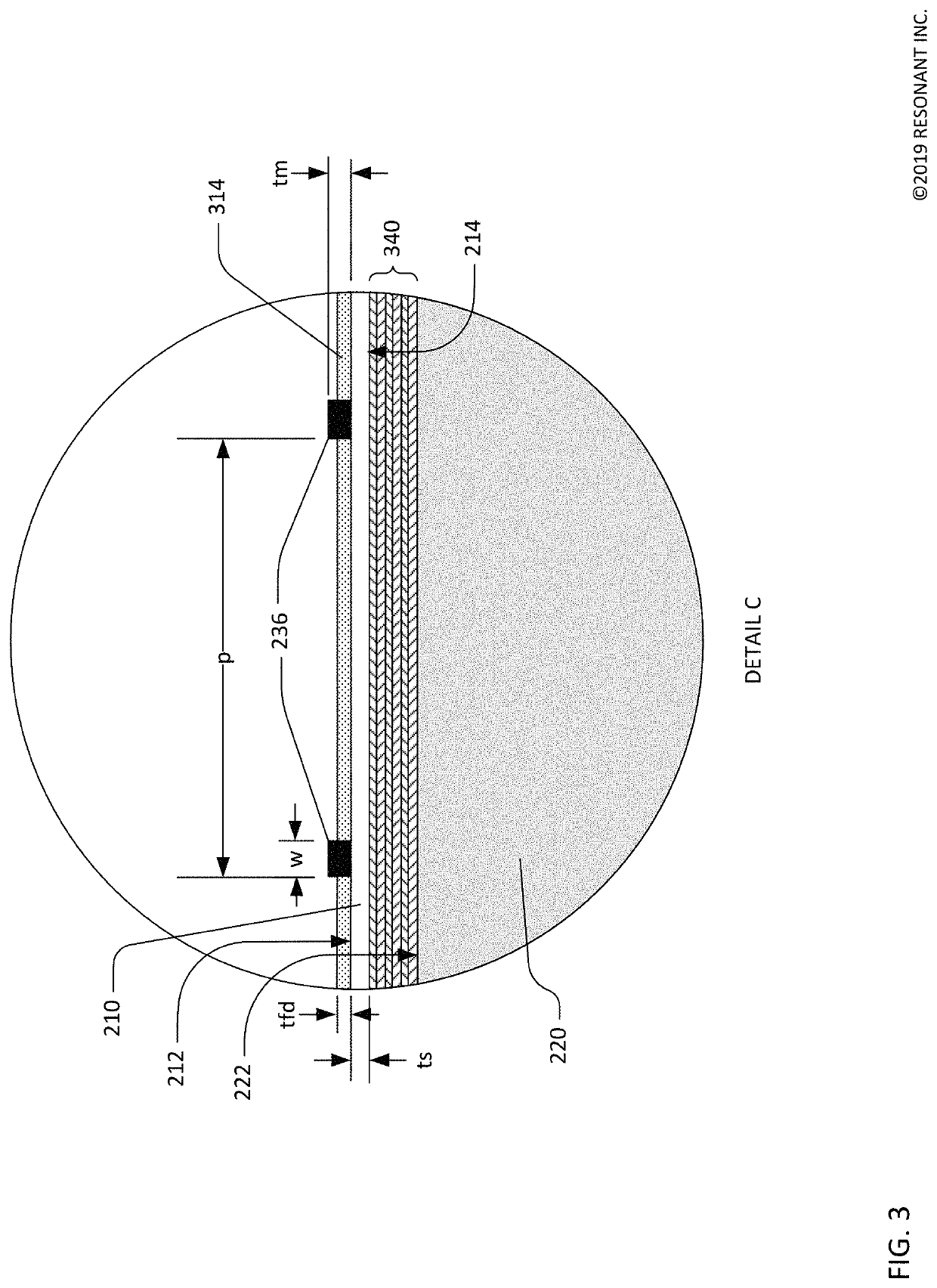Solidly-mounted transversely-excited film bulk acoustic resonator
a transversely excited film and bulk acoustic resonator technology, applied in the direction of impedence networks, electrical equipment, etc., can solve the problem that existing technologies are not well-suited for use at the higher frequencies proposed for future communications networks
- Summary
- Abstract
- Description
- Claims
- Application Information
AI Technical Summary
Benefits of technology
Problems solved by technology
Method used
Image
Examples
example 1
[0050]FIG. 5A is a schematic cross-sectional view of a SM XBAR 500 with an acoustic Bragg reflector 510 comprising alternating SiO2 and Si3N4 layers. The piezoelectric plate is Z-cut (i.e. Z axis normal to the surfaces of the plate) lithium niobate (LN) with a thickness of 400 nm. The IDT fingers are aluminum with a thickness of 100 nm. The pitch and width of the IDT fingers are Sum and 500 nm, respectively. The IDT is oriented such that the IDT fingers are parallel to the X axis of the piezoelectric plate. The acoustic Bragg reflector 510 has a total of 20 layers that alternate between SiO2 layers 210 nm thick and Si3N4 layers 320 nm thick. The large number of layers in the acoustic Bragg reflector 510 is necessitated by the relatively small difference in acoustic impedance of the SiO2 and SiN3 layers. The substrate supporting the acoustic Bragg reflector 510 and the piezoelectric plate is silicon.
[0051]FIG. 5B is a chart 550 with a plot 560 of the normalized magnitude of the admit...
example 2
[0053]FIG. 6A is a schematic cross-sectional view of a SM XBAR 600 with an acoustic Bragg reflector 610 comprising alternating SiO2 and tungsten (W) layers. The piezoelectric plate is Z-cut (i.e. Z axis normal to the plate) lithium niobate (LN) with a thickness of 400 nm. The IDT fingers are aluminum with a thickness of 100 nm. The pitch and width of the IDT fingers are 6 um and 1.8 um, respectively. The IDT is oriented such that the IDT fingers are parallel to the X axis of the piezoelectric plate. The acoustic Bragg reflector 610 has a total of seven layers that alternate between SiO2 layers 210 nm or 270 nm thick and W layers 160 nm or 170 nm thick. The reduced number of layers in the acoustic Bragg reflector 610 (compared to the acoustic Bragg reflector 510) is allowed by the relatively high difference in acoustic impedance of the SiO2 and W layers. The substrate is silicon.
[0054]FIG. 6B is a chart 650 with a plot 660 of the normalized magnitude of the admittance (on a logarithm...
example 3
[0056]FIG. 7A is a schematic cross-sectional view of a SM XBAR 700 with an acoustic Bragg reflector 710 comprising alternating low acoustic impedance and high acoustic impedance layers. The piezoelectric plate is Z-cut (i.e. Z axis normal to the plate) lithium niobate (LN) with a thickness of 400 nm. The IDT fingers are aluminum with a thickness of 100 nm. The pitch and width of the IDT fingers are 6 um and 1.8 um, respectively. The IDT is oriented such that the IDT fingers are parallel to the X axis of the piezoelectric plate. The acoustic Bragg reflector 710 has a total of seven layers. The low acoustic impedance layers are SiO2 210 nm, 270 nm, or 285 nm thick. The high acoustic impedance layer closest to the piezoelectric plate is Si3N4 360 nm thick. The other two high impedance layers are W 170 nm thick. The incorporation of a dielectric Si3N4 high impedance layer moves the conductive W layers 570 nm further from the IDT electrodes compared to the SM XBAR 500 of FIG. 5A. The sub...
PUM
 Login to View More
Login to View More Abstract
Description
Claims
Application Information
 Login to View More
Login to View More - R&D
- Intellectual Property
- Life Sciences
- Materials
- Tech Scout
- Unparalleled Data Quality
- Higher Quality Content
- 60% Fewer Hallucinations
Browse by: Latest US Patents, China's latest patents, Technical Efficacy Thesaurus, Application Domain, Technology Topic, Popular Technical Reports.
© 2025 PatSnap. All rights reserved.Legal|Privacy policy|Modern Slavery Act Transparency Statement|Sitemap|About US| Contact US: help@patsnap.com



